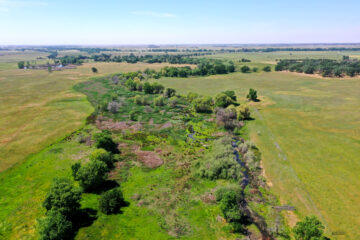
What is the Ecological Health Audit, and what does it measure?
The Ecological Audit (EA) is a series of rapid, field-based surveys that Placer Land Trust will conduct across lands that we own every few years. It measures several different metrics that together serve as general indicators of ecological health.
We are in the process of drafting the EA; our current draft method is posted below. This draft method focuses on habitat/ plant community metrics for different ecosystems: valley grasslands, foothills oak woodlands, Sierra forests, and “riparian” areas along streams.
The Ecological Audit measures:
• “Structural Complexity and/or Diversity” – is there a variety in the type and sizes of plants (grasses, shrubs, trees), is there good wildlife habitat (large trees and snags)
• “Regeneration” – are there young trees to replace old trees, are grasses re-growing over time
• “Indicator Species Abundance” – are there more native plant species than invasive species, are there certain species present that suggest good health
• “Soil Compaction” – how dense and compacted is the soil, indicating how well it absorbs water and allows plants to grow
Please note: While the current DRAFT method focuses on habitat and plants, we are considering adding soil health and bird diversity metrics as additional indicators of ecological health. If we do, we will update the method.
What’s the purpose, and how will it be used?
The purpose of the Ecological Audit is to help Placer Land Trust staff to get a better sense of the overall ecological health of our conserved lands. The EA will be used to help inform our land management practices, such as grazing, restoration, and forestry, so that these practices may better support ecological and other conservation goals. While the EA focuses only on ecological measures, some of our preserves support other conservation values such as public recreation. It is the responsibility of PLT Preserve Managers to use this information to help balance multiple conservation goals.
While the EA metrics are scored and produce “grades” (A, B, C, D) indicating health, these results should NOT be taken at face value. There are many caveats and issues around measuring ecological health and assigning a score. Instead, the results will be used to generate discussion and help PLT to consider different management options.
What’s next?
Placer Land Trust staff are seeking review and input of our draft method from various experts. We plan to try out the Ecological Audit again in the spring of 2022 on a handful of our preserves, and will then adjust the method as needed. We hope to implement the EA every few years on select preserves.

